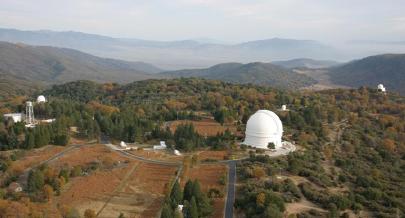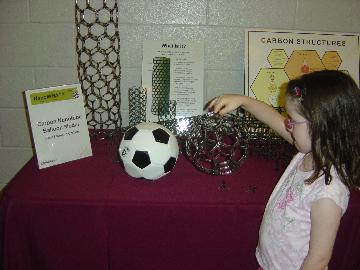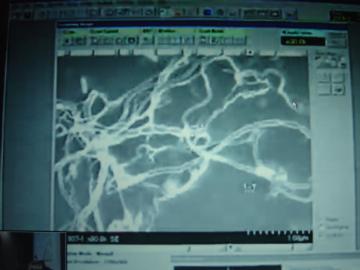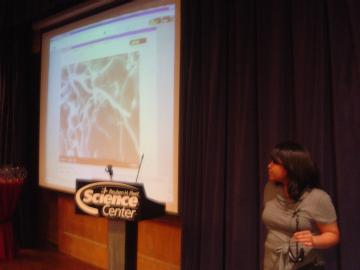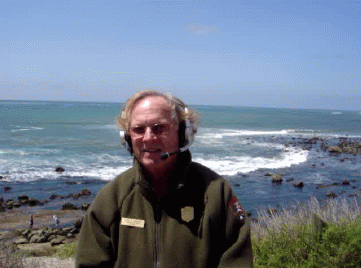
|
|
|
|
April 27, 2009
From Electron Microscopes to World-Class Telescopes and Beyond: April HPWREN LIVE Activities Include UCSD Department of NanoEngineering Electron Microscope Facility, the Palomar Observatory, Birch Aquarium, and Cabrillo National Monument By Kimberly Mann Bruch, HPWREN and StSS On April 8, the HPWREN team worked with the Palomar Observatory to take a group of elementary school students on an out-of-this-world LIVE activity between their spring break science camp at the Reuben H. Fleet Science Center and the Palomars's Hale telescope dome. Situated just in front of the 200" telescope, Palomar Observatory's Scott Kardel discussed an array of astronomy concepts with the 45 students at the Science Center.
While questions and answers flew back and forth between the Science Center and the HPWREN-connected Palomar Observatory, the real-time LIVE activity also included a slideshow of breathtaking images taken by telescopes at the observatory. The activity was such a success that facilitator Kim Bruch decided to take the show on the road to an additional student group on April 22; this time the students hailed from the Julian Charter School Astronomy Club, which meets weekly at a City of San Diego Library. The April 22 experiment was not as successful as the April 8 activity as the library's wireless network bandwidth was overloaded and did not allow for audio or video transmission via the Internet. In lieu of the local Internet connection, an alternate approach was tried via the AT&T 3G network, which provided choppy audio and no video transmission due to a low signal. The activity ended up consisting of a Powerpoint presentation regarding Palomar Observatory with audio via the 3G connection; Scott Kardel talked with the students in real-time about the observatory as well as the growing light pollution issue atop Palomar mountain. Though there was no video during the activity and the audio quality was not very good, the 30+ elementary school students all agreed that the activity sparked their interest in visiting the observatory in person and the school is now looking into a fieldtrip before year's end. "This type of activity allows us to reach out to students that would not otherwise be aware of the powerful telescopes within the county," said Scott Kardel of the Observatory. "A part of our mission is to educate young minds about the world around us and activities like the LIVE technology allow us to do just that." A similar LIVE activity took place on April 18 between the Science Center's NanoWHAT Day and the UCSD Department of NanoEngineering Electron Microscope Facility. Led by Professor Kenneth Vecchio, NanoWHAT LIVE participants were able to see first-hand how an electron microscope works. Prior to the real-time demonstration, NanoWHAT participants had an opportunity to explore a number of hands-on activities such as a carbon nanotube balloon model, a liquid crystal sensor, and a nano noodle challenge.
"The ability to ask questions in real-time is what really makes the LIVE activities unique," said Science Center Education Coordinator Amanda Lincoln. "It is one thing to be able to watch a video about a complicated science tool, but to be able to interact with a scientist that utilizes an electron microscope makes it so much easier to understand."
The Birch Aquarium is also exploring ways to incorporate LIVE technology into their science education programs. To demonstrate the concept, the HPWREN team worked with the Cabrillo National Monument staff to facilitate an activity between the intertidal area (Point Loma) and the Aquarium (La Jolla) on April 7. An array of Cabrillo National Monument LIVE activities have taken place via the StSS project and the most recent ones are detailed in an article entitled First Annual San Diego Science Festival Includes Several Activities with HPWREN and StSS Projects (https://www.hpwren.ucsd.edu/news/20090416/). For additional information about HPWREN LIVE pilot work, please
refer to https://www.hpwren.ucsd.edu/LIVE.
For information about the Sea to Shining Sea project, see http://seatoshiningsea.org.
|

